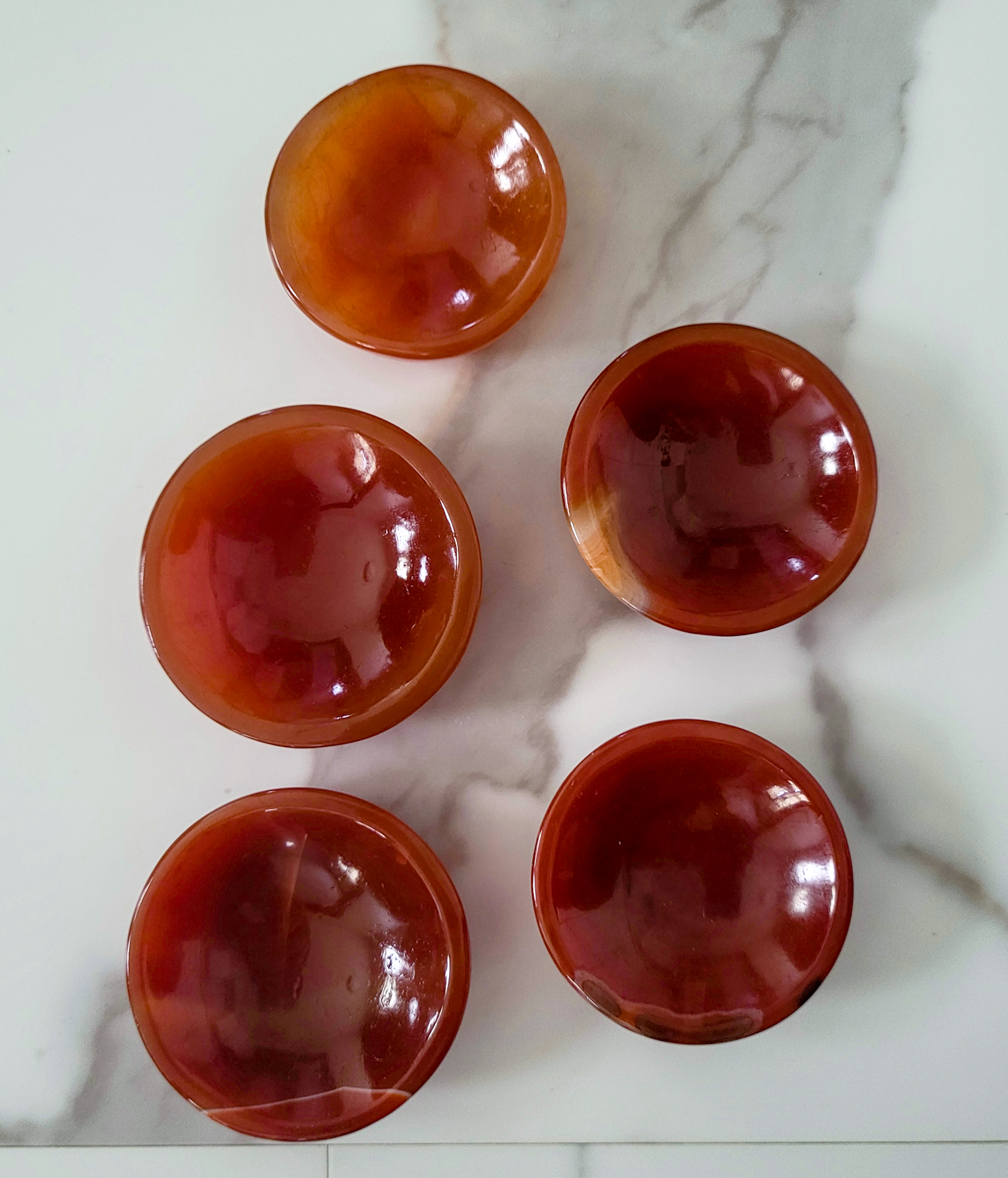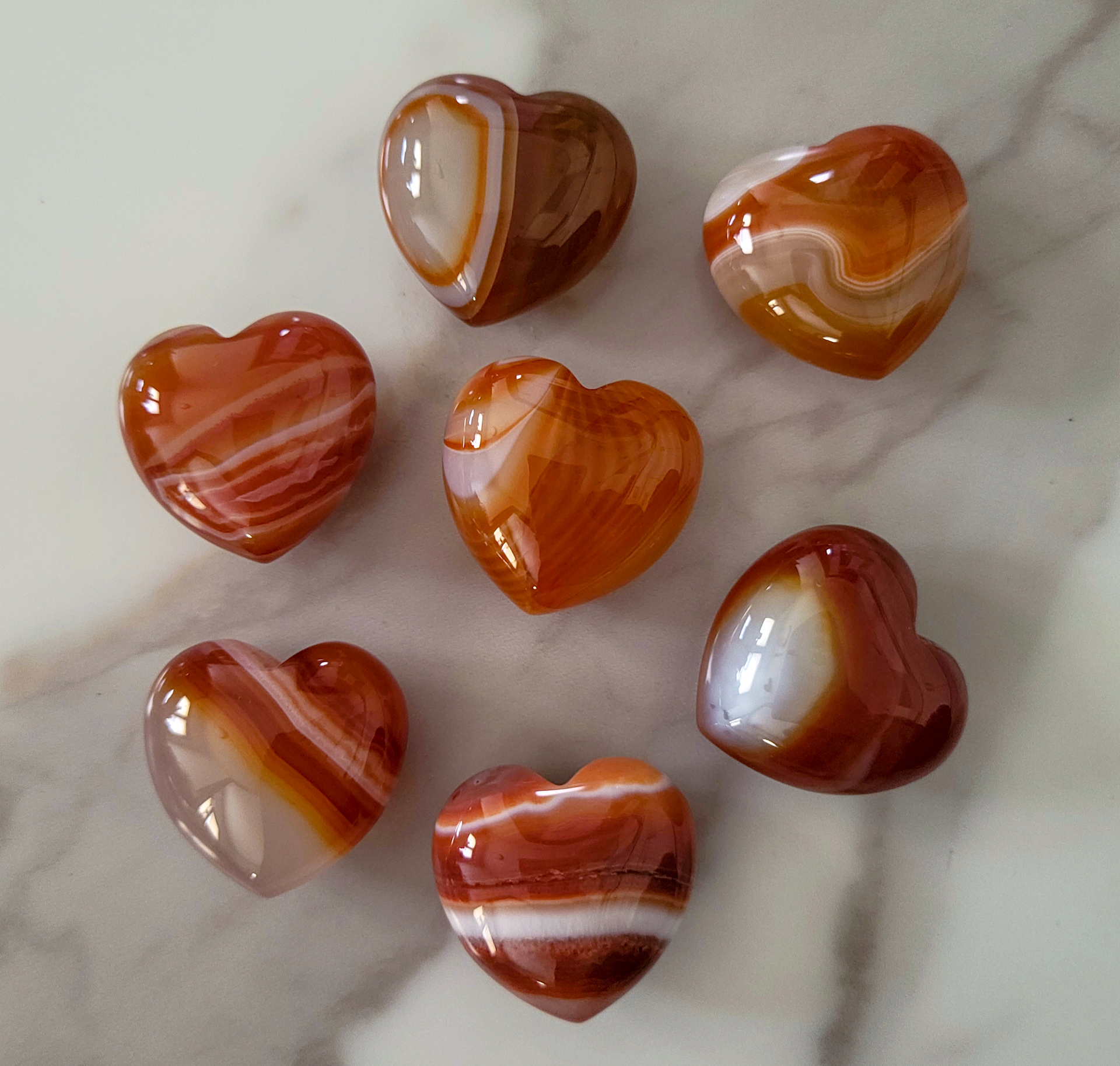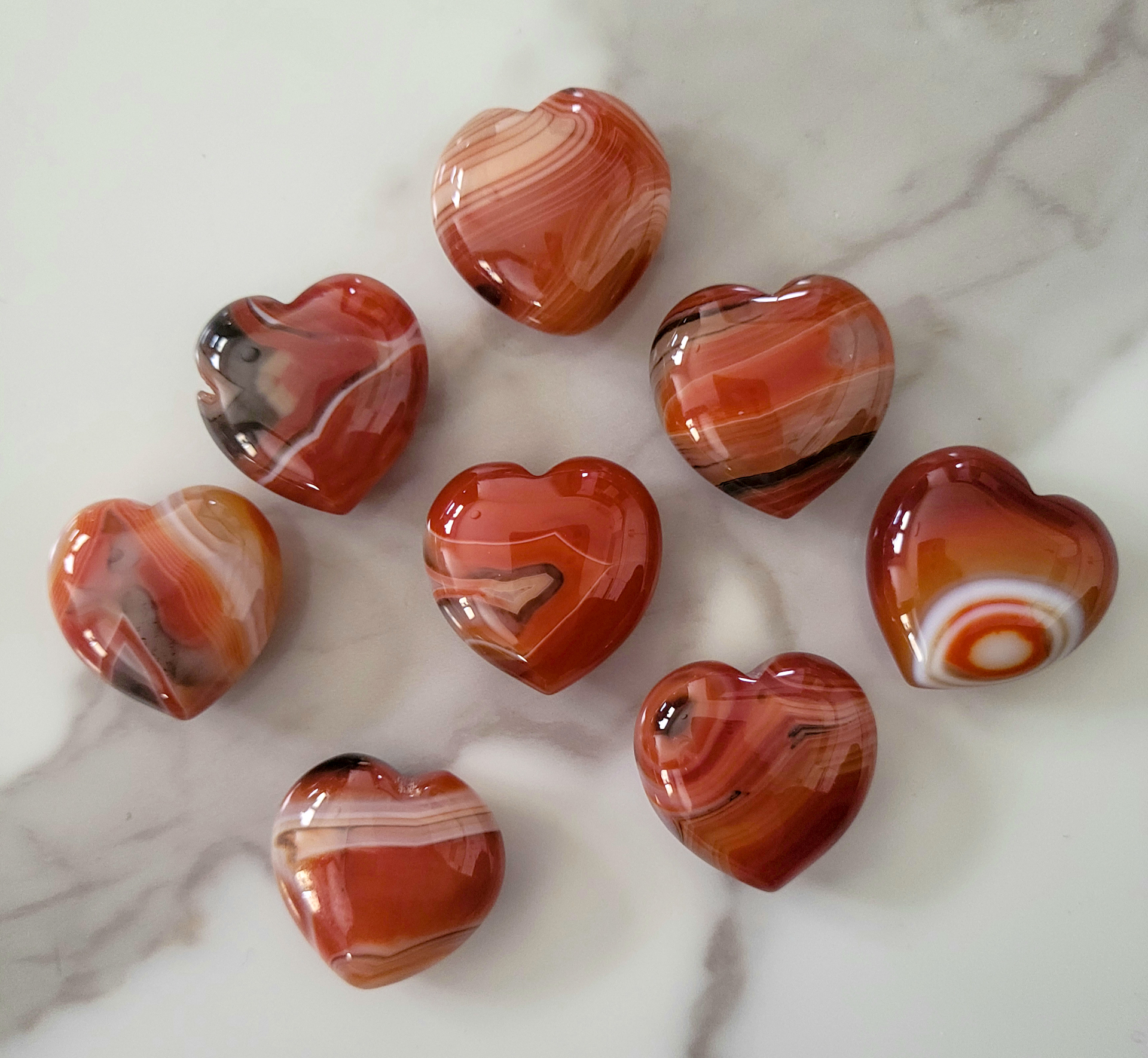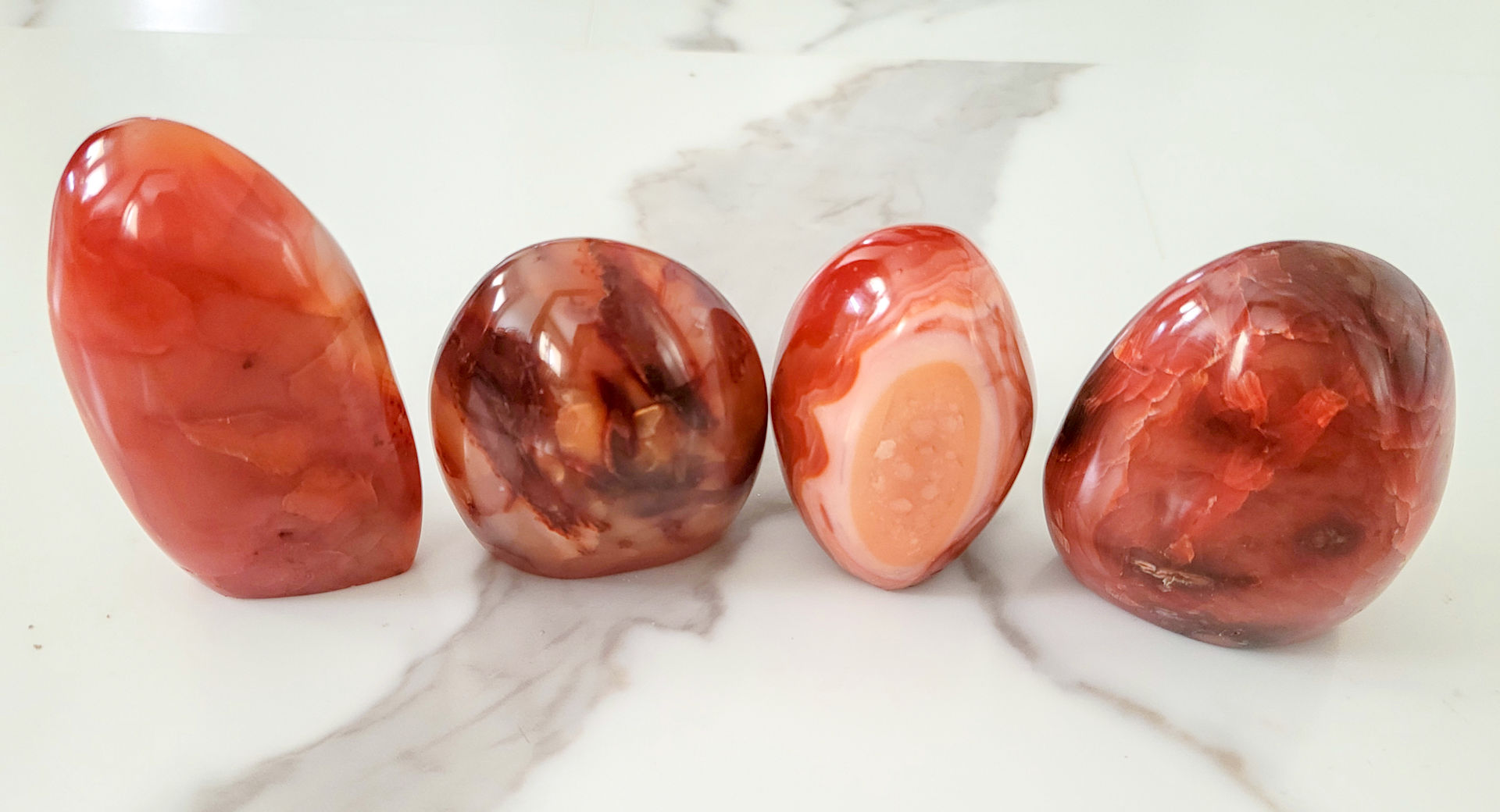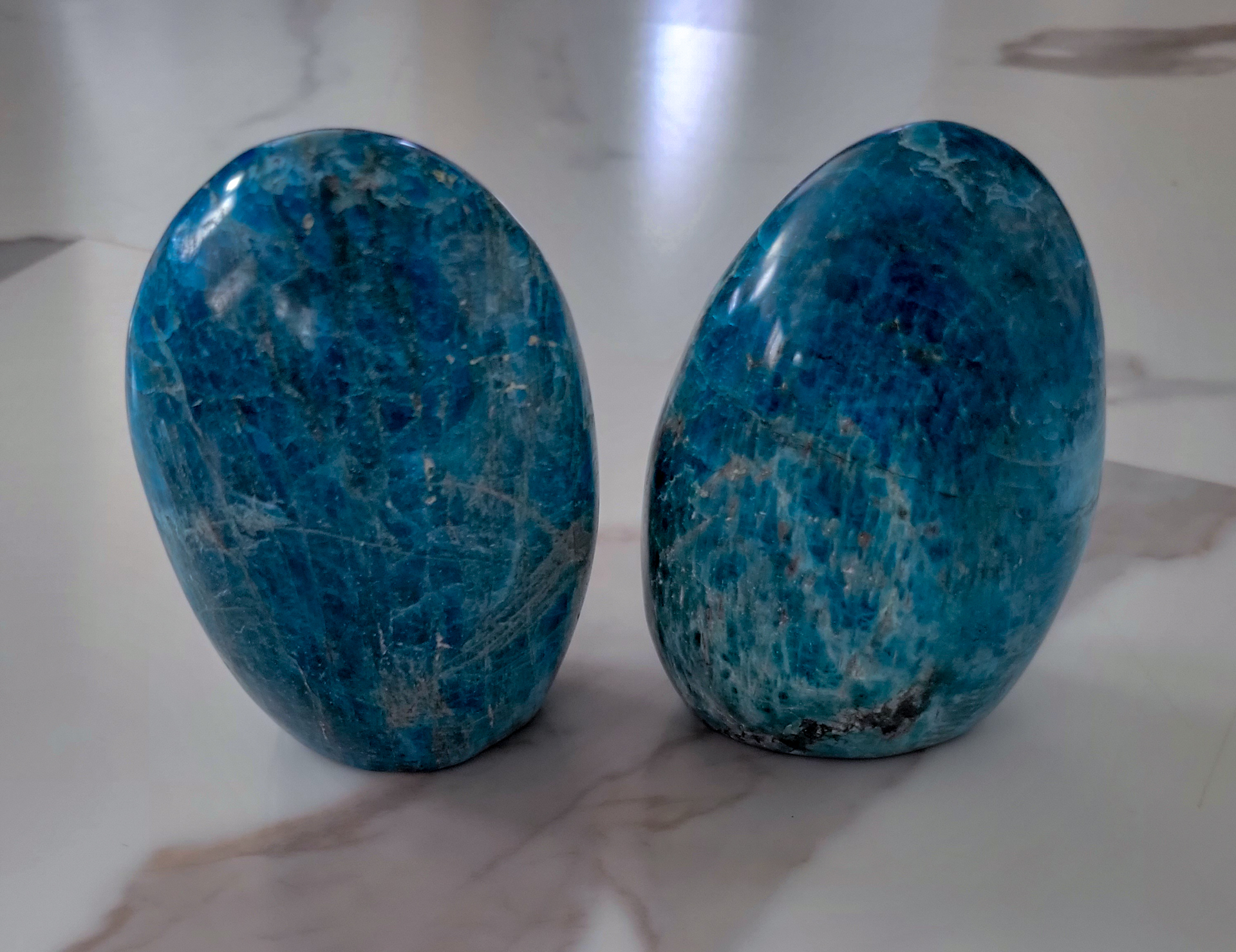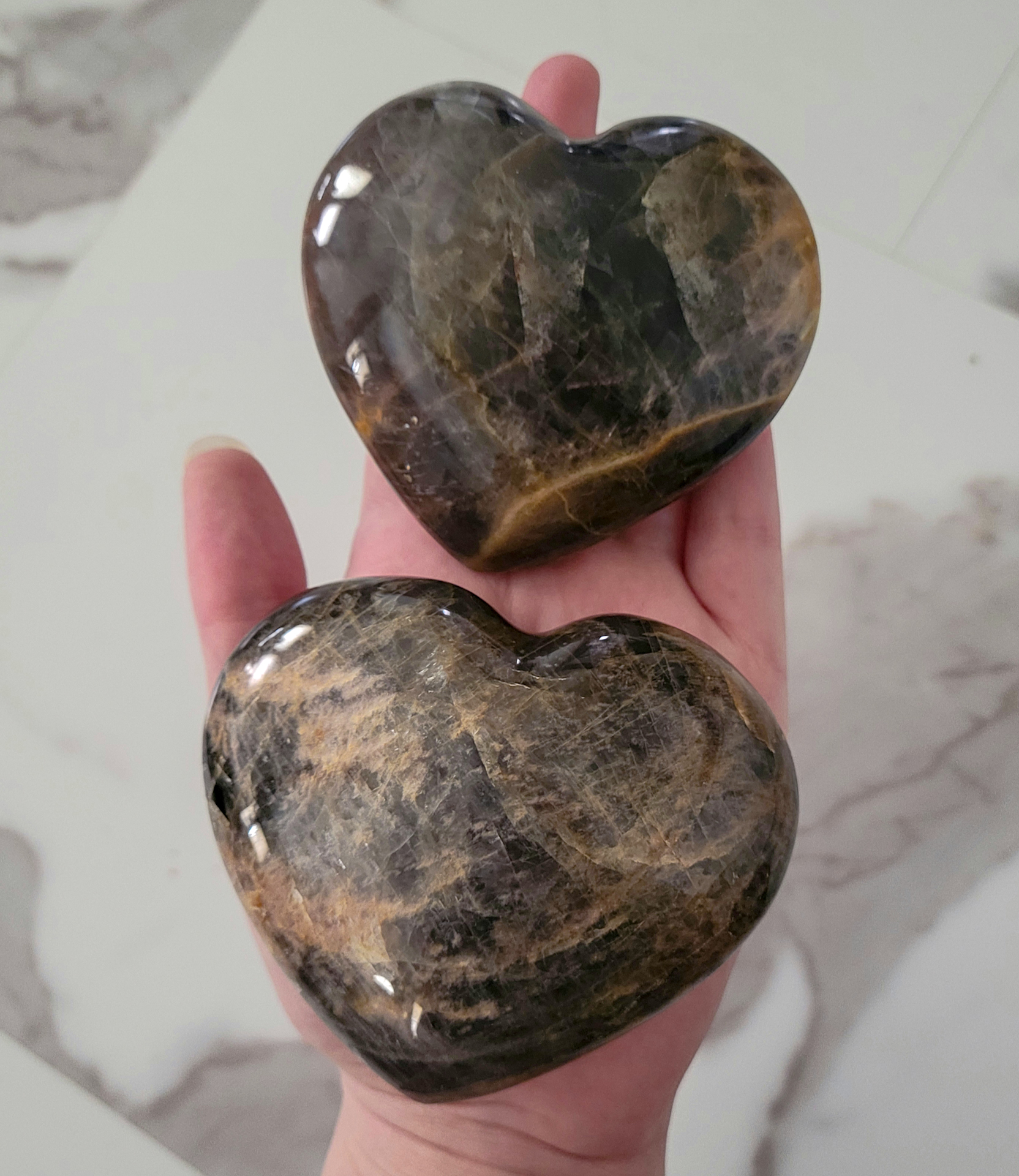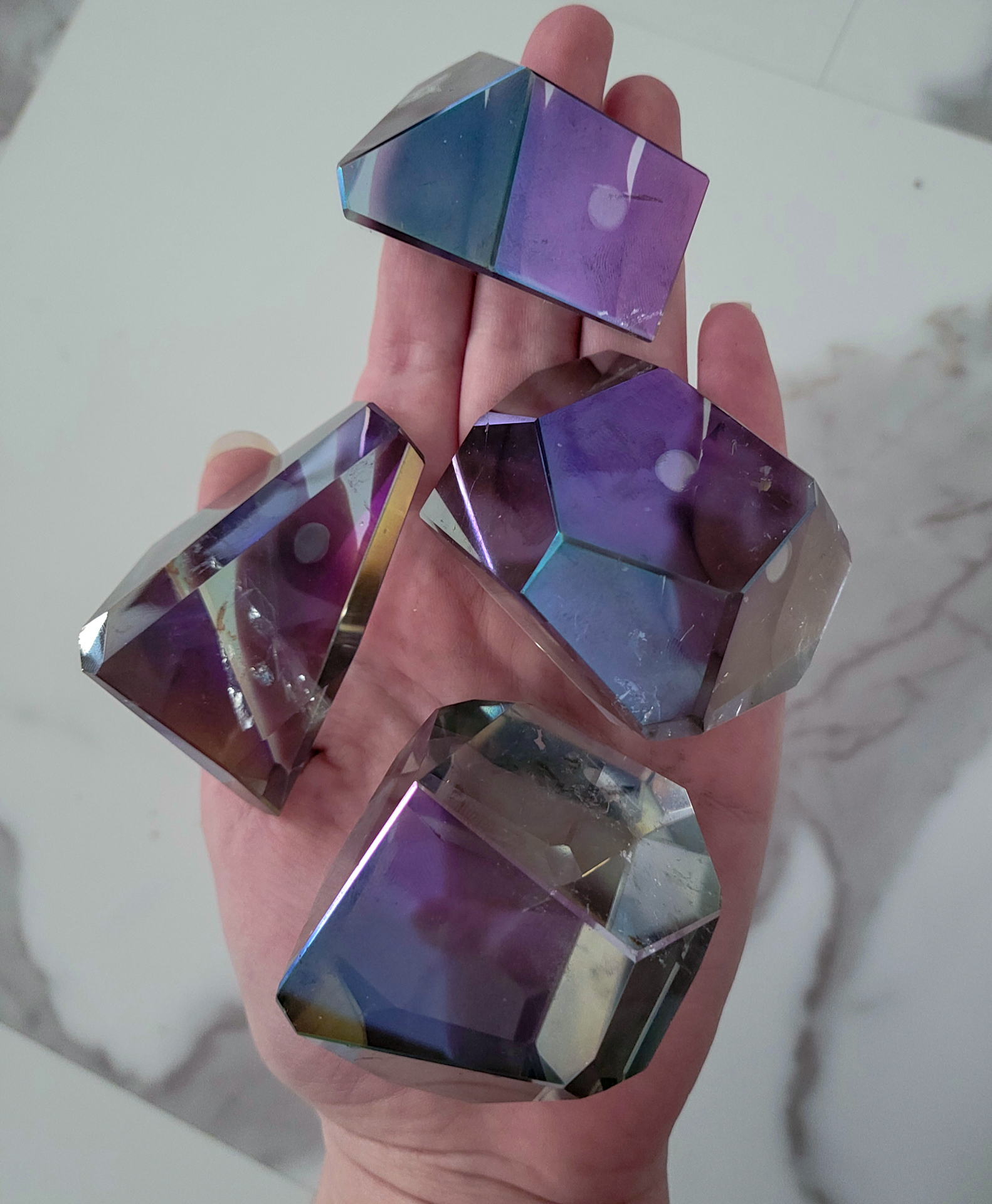-
5 x 2 x 6cm Carnelian is a part of the Chalcedony family. It is formed when two silica minerals with different crystal structures grow together such as quartz and moganite. The firey orange and red colors come from iron oxides in the mineral. Carnelian can be found in Brazil, India, and Uruguay. ***Due to natural variations in stones, the appearance will vary***
-
3 x 1 x 3cm Carnelian is a part of the Chalcedony family. It is formed when two silica minerals with different crystal structures grow together such as quartz and moganite. The firey orange and red colors come from iron oxides in the mineral. Carnelian can be found in Brazil, India, and Uruguay. ***Due to natural variations in stones, the appearance will vary***
-
3 x 1 x 3cm Carnelian is a part of the Chalcedony family. It is formed when two silica minerals with different crystal structures grow together such as quartz and moganite. The firey orange and red colors come from iron oxides in the mineral. Carnelian can be found in Brazil, India, and Uruguay. ***Due to natural variations in stones, the appearance will vary***
-
7 x 3 x 10cm Carnelian is a part of the Chalcedony family. It is formed when two silica minerals with different crystal structures grow together such as quartz and moganite. The firey orange and red colors come from iron oxides in the mineral. Carnelian can be found in Brazil, India, and Uruguay. ***Due to natural variations in stones, the appearance will vary***
-
8 x 3 x 11cm Apatite is formed under sedimentary rocks found in marine environments. In this environment, phosphatic organic debris (such as bones, teeth, scales, and fecal material) mineralizes to form these crystals. These crystals vary from green to blue color. ***Due to natural variations in stones, the appearance will vary***
-
11 x 2 x 11cm Black moonstone is a silicate gemstone and is famous for its shimmering effect when moved in sunlight. It is believed that these stones resemble the moon when they show their shimmer. Most of the black moonstones have swirls and lines of tan, gray, and peach. Moonstones come in a variety of colors; black, pink, green, white, brown, and grey. This mineral was originally discovered in Madagascar but can also be found in Armenia, Australia, Mexico, and many other countries. ***Due to natural variations in stones, the appearance will vary***
-
5 x 4 x 5cm Clear quartz is made of Silicon dioxide and is one of Earth's hardest minerals on the Moh's hardness scale. It is found mixed in many types of minerals and also in bedrock, sand, and gravel. Quartz is naturally clear and opaque but can be found in many other colors. This mineral Earth's most abundant crystal and can be found in many different places but mostly in the Alps, Madagascar, and Brazil. ***Due to natural variations in stones, the appearance will vary***
-
6 x 5 x 6cm Clear quartz is made of Silicon dioxide and is one of Earth's hardest minerals on the Moh's hardness scale. It is found mixed in many types of minerals and also in bedrock, sand, and gravel. Quartz is naturally clear and opaque but can be found in many other colors. This mineral Earth's most abundant crystal and can be found in many different places but mostly in the Alps, Madagascar, and Brazil. ***Due to natural variations in stones, the appearance will vary***

